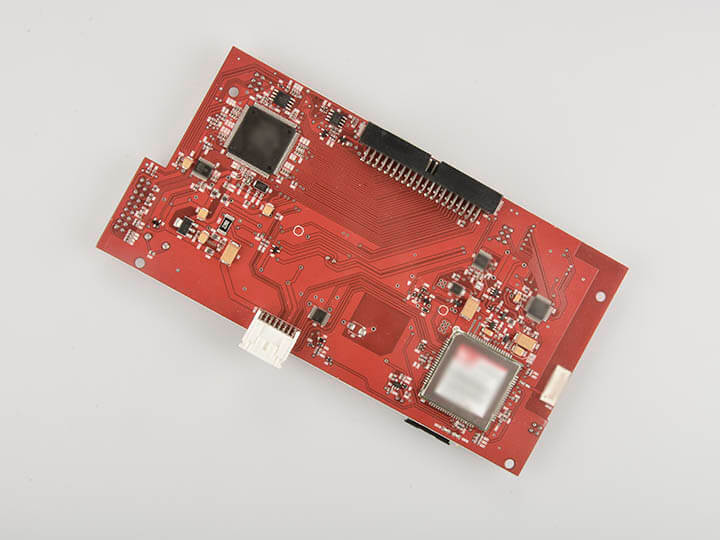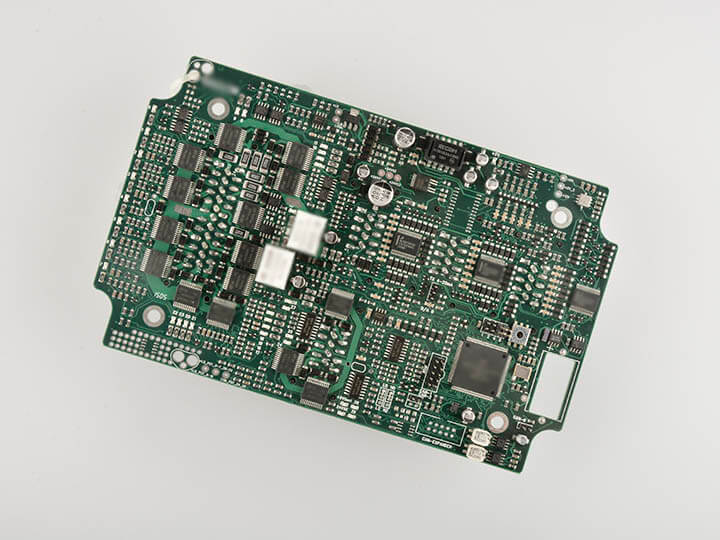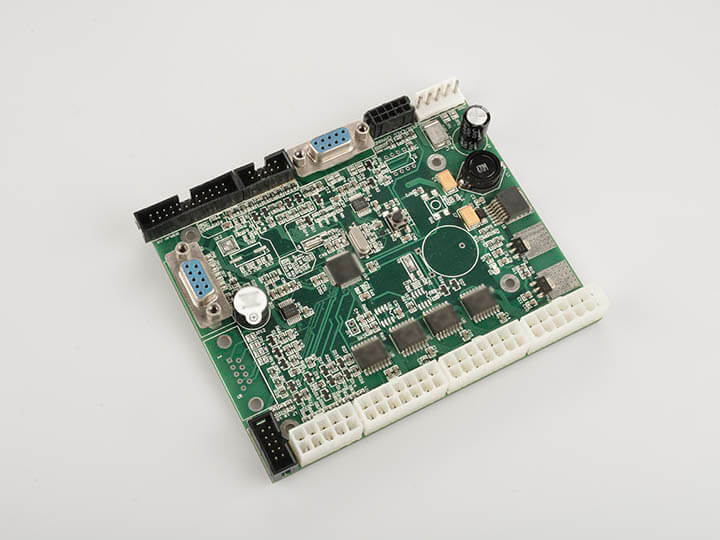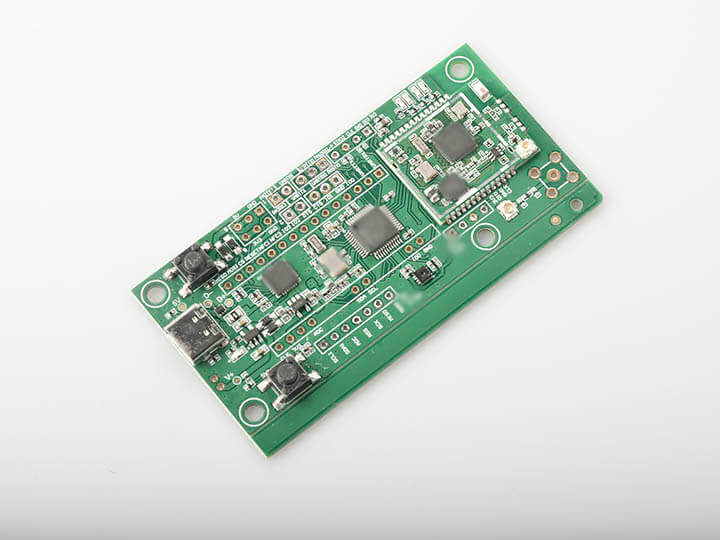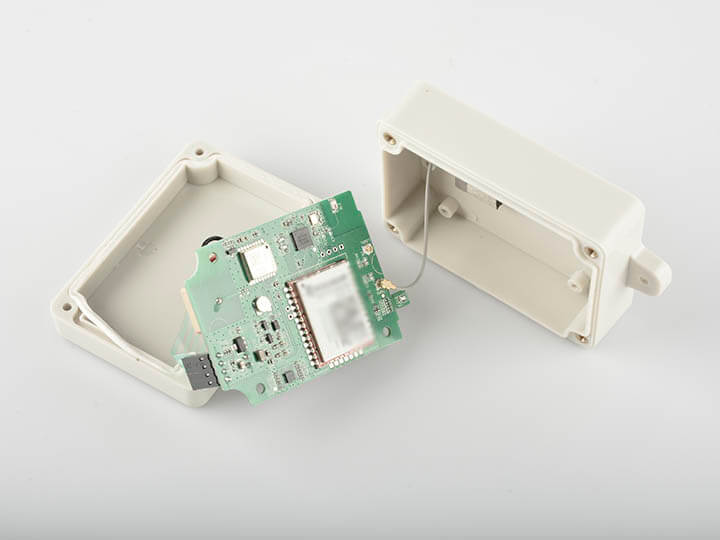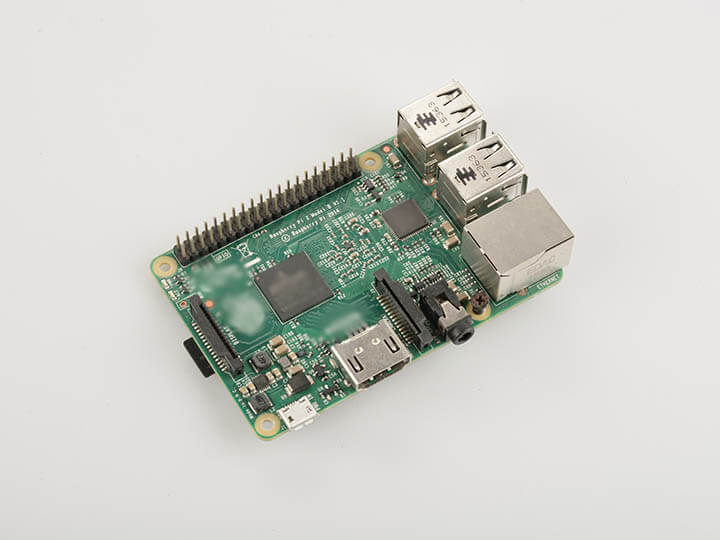Home » High Frequency PCB (HFP)
High Frequency PCB (HFP)
High frequency PCB manufacturing can be used when special signal requirements is needed for electronic equipment and products. The frequency range of 500MHz – 2GHz is its operation environment. Hence, these are ideal for high-end applications. Today, the complexity of electronic devices is rapidly increasing. Hence, we need high frequency PCB for providing faster signal flow rates.
1. These typically have a low dielectric constant (approximately 2.40) and have tight tolerances.
2. They feature a small dissipation factor. Hence, they have a low loss tangent. Therefore, it allows for faster signal propagation and low signal distortion. So, they are suited for high frequency applications that demand high reliability.
3. These have a thermally stable structure because they have a relatively low Z-axis CTE. So, the low CAF resistance and the low Z-CTE leads to a long lifespan for these PCBs.
4. They feature excellent dimensional stability. Hence, ideal for applications involving extreme environmental conditions.
5. These feature small moisture absorption. Hence, they provide excellent resistance against heat and moisture.
6. They have ideal properties for reflow conditions. Hence, they are favorable for industrial application.
High Speed PCB vs. High Frequency PCB
In the PCB industry, people often confuse the term high speed PCB layout with high frequency PCB layout. They do this because they think that the two terms are the same. However, that is not the case because the meaning of these two terms is completely different.
High Speed PCB design relates to PCB which have to allow for transmitting data at a very high rate. Hence, it refers to the time domain.
High Frequency PCB design relates to PCB which deals with signals having high frequency and shorter wavelengths. Hence, it refers to the electromagnetic waves of the incoming and outgoing signals.
Since High Frequency PCB layout operates on high frequency therefore, they are often subjected to extreme heat. If the material is not suitable then it may lead to the accumulation of thermal stresses. Hence, we need to select such a material that offers a favorable Coefficient of Thermal Expansion (CTE). Apart from this, the material should have high dimensional stability. So that it doesn’t degrade while operating.
- We usually deploy these materials for advanced applications. Therefore, the material we use for fabrication should have excellent thermal and electrical conductivity.
- We often deploy High Frequency PCB in extreme environments. Hence, they should have high resistance to corrosion and moisture. Therefore, the material we use for fabricating high frequency PCB should have resistance to moisture absorption.
- High Frequency signals are very sensitive to noise. Hence, we need to use such material for fabricating these PCBs that it has tighter impedance tolerances.
The following chart will help you in selecting high frequency PCB materials.
| Material | Dielectric Constant | Dissipation Factor | Lamination Temperature (oF) | Re-melt Temperature (oF) |
|---|---|---|---|---|
| FEP | 2.10 | 0.0010 | 565 | 520 |
| PTFE | 3.00 | 0.0013 | 700 | 640 |
| LCP | 2.90 | 0.0025 | 554 | 520 |
| Thermoset Hydrocarbon | 3.90 | 0.0040 | 350 | N/A |
| FR-4 | 4.50 | 0.0180 | 360 | N/A |
We use high frequency PCB in almost every industry. However, we also interact with them in our daily lives. You can observe a high frequency PCB in the ATM machine of a bank, a vending machine, the computer you are using to read this, the mobile phone you use to browse the internet, and the Wi-Fi router in your homes or offices.
Some of the prominent industrial domains which rely on high frequency PCB are,
- Network communications especially the ones which involve verification of the signal integrity.
- Manufacturing small devices involving small circuit layout.
- Designing modules for devices that require excellent impedance control.
- Consumer-facing installed electronics such as digital counters at an airport. We use high frequency PCB in them because these machines require advanced controlling, they process data in high volumes and interact with customers in shorter time intervals.
- Designing and manufacturing the high-speed digital test boards for various signals. So, this includes tests for the roll-off for RF signal.
- Manufacturing medical equipment which is extremely dense works at high speed but has lower costs.
Different schools of thoughts have different approach to this question. However, there is no specific definition that tells you when to go with high speed design. So, it mainly depends on your specific circumstances. However, we have put together the following high frequency PCB design guideline for you so that you can easily make this decision.
- If you are encountering some signal integrity problems with your PCB layout then perhaps it is a good idea to stick with a high-speed design.
- Some experts recommend using the device-specific approach. So, if you are designing a cell phone, a motherboard, a DSL router, a vending machine, then you should look towards the high-speed design. However, this approach also suggests that if you have to incorporate USB, HDMI, SATA, or PCI express onto your PCB then you should again go with the High Frequency PCB.
- Another major indication for going with High Speed Design is whether you are working on lumped or distributed circuits. Lumped systems are small physical systems which interact together uniformly and hence aren’t considered high speed. However, if the systems operate independently then it is a distributed system that requires a high-speed design.
The following rule of thumb will serve as a broad guide for you. So, you should remember that,
“You should look towards high speed design whenever the trace length becomes a significant fraction of the fastest signal’s wavelength.”
This implies that PCBs which are large in size require high speed design solutions at significantly lower frequencies. However, PCBs which are smaller in size require high speed design solutions at relatively higher frequencies. The difference between the two is due to the difference in trace lengths.
MOKO Technology is a renowned name in the PCB industry and we have years of experience since 2006. We specialize in the design and development of customized High Frequency PCB as per your needs. We have a sophisticated setup and have the necessary standard certifications. If you require your PCBs to give excellent performance then you should discuss your high frequency PCB project with us today.
